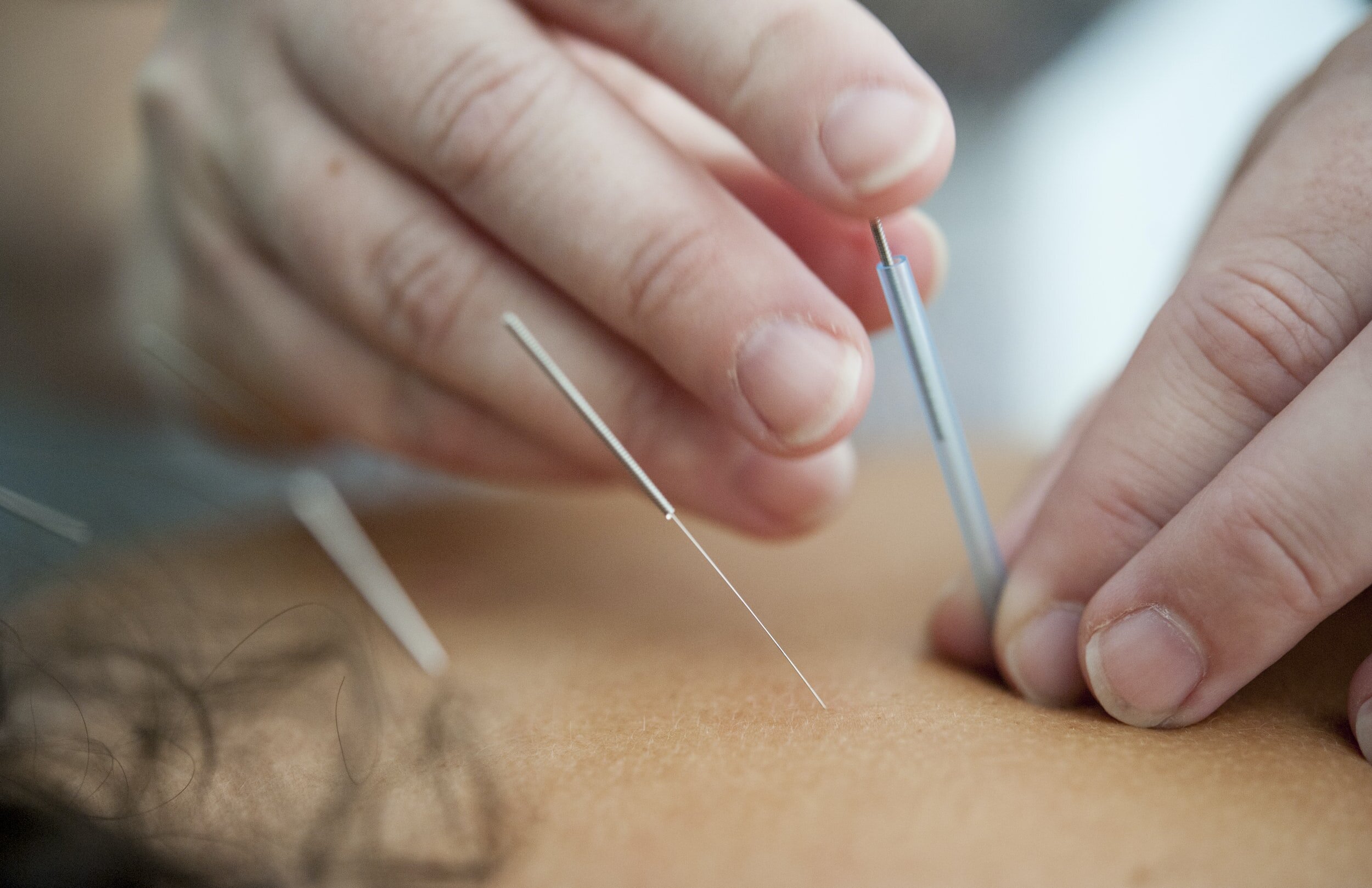
Acupuncture and Addiction
Presentation by Makenzie Knighten
Peer reviewers: Richard Fuentes & Nicholas Wong
Introduction:
Acupuncture therapy has been an accepted practice in Chinese medicine since the early sixteenth century. It has only recently been acknowledged for its benefits in Western medicine, earning recognition from the National Institute of Health in 1997. Acupuncture was initially used to treat pain, nausea after surgery or chemotherapy, and morning sickness; and has proven effectiveness in treating conditions, such as headaches, asthma, stroke rehabilitation, and fibromyalgia. Now, its uses have expanded, and acupuncture is being used for anesthesia during procedures, myofascial pain syndrome, correction of breech position in unborn fetuses, and much more. Recently, acupuncture treatment has been the focus of many clinical trials in studying its effects on substance abuse disorders. The National Acupuncture Detoxification Association (NADA) protocol was developed in 1985 to allow addiction centers to use acupuncture to treat substance abuse disorders in the United States and the United Kingdom. Then, in 1996, the World Health Organization accepted acupuncture as a treatment for drug abuse. Since 1996, it has been utilized as a treatment option for cocaine, opioid, nicotine, and alcohol. The study of acupuncture as a treatment for addiction has demonstrated contradictory results due to factors such as: intergroup differences, variation in sample sizes, and acupuncture placebo effects. This paper focuses on the outcomes of a select few clinical trials, namely in the diverse effects and results of acupuncture on patients presenting with different addictions.
Future Research
Effectiveness of acupuncture treatment in conjunction with other forms of therapy
Overall effect on the limbic system of the brain, specifically, in the creation of dopamine
Studying alternative forms of acupuncture including but not limited toL electro-acupuncture, ear acupuncture, laser acupuncture, moxa, and acupoint massage
References
Acupuncture: In Depth. Nccih.nih.gov. (2020). Retrieved 15 November 2020, from https://www.nccih.nih.gov/health/acupuncture-in-depth.
Acupuncture Therapy for Drug Addiction. Philadelphia Addiction Center. (2020). Retrieved 16 November 2020, from https://philaaddictioncenter.com/acupuncture-for-drug-addiction/.
Addiction. (2020). Can Acupuncture Help with Addiction? Lifeline Connections. Retrieved 16 November 2020, from https://lifelineconnections.org/can-acupuncture-be-beneficial-in-.
Cai, X., Song, X., Li, C., Xu, C., Li, X., & Lu, Q. (2012). Acupuncture inhibits cue-induced heroin craving and brain activation. Neural regeneration research, 7(33), 2607–2616. https://www.ncbi.nlm.nih.gov/pmc/articles/PMC4200728/
Li, J., Sun, Y., Ye, J.H.. (2012). Electroacupuncture Decreases Excessive Alcohol Consumption Involving Reduction of FosB/ΔFosB Levels in Reward-Related Brain Regions. PLoS ONE 7(7): e40347. https://doi.org/10.1371/journal.pone.0040347
Lu, D. P., & Lu, G. P. (2013). An Historical Review and Perspective on the Impact of Acupuncture on U.S. Medicine and Society. Medical acupuncture, 25(5), 311–316. https://www.ncbi.nlm.nih.gov/pmc/articles/PMC3796320/
Motlagh, F.E., Ibrahim, F., Rashid, R.A. et al. (2016). Acupuncture therapy for drug addiction. Chin Med. https://doi.org/10.1186/s13020-016-0088-7
Roh, H. S., Park, B. R., Jang, E. Y., Kim, J. S., & Gwak, Y. S. (2018). Acupuncture on the Stress-Related Drug Relapse to Seeking. Evidence-based complementary and alternative medicine : eCAM. 5367864. https://doi.org/10.1155/2018/5367864
Stuyt, E. B., & Voyles, C. A. (2016). The National Acupuncture Detoxification Association protocol, auricular acupuncture to support patients with substance abuse and behavioral health disorders: current perspectives. Substance abuse and rehabilitation, 7, 169–180. https://www.ncbi.nlm.nih.gov/pmc/articles/PMC5153313/
The Limbic Reward System. Treatment for Stimulant Use Disorders. NCBI Bookshelf. Ncbi.nlm.nih.gov. (2020). Retrieved 15 November 2020, from https://www.ncbi.nlm.nih.gov/books/NBK64328/figure/A59017/.
Witt, C.M., Pach, D., Brinkhaus, B., Wruck, K., Tag, B., Mank, S., Willich, S.N. (2009). Safety of Acupuncture: Results of a Prospective Observational Study with 229,230 Patients and Introduction of a Medical Information and Consent Form. Forsch Komplement Med https://pubmed.ncbi.nlm.nih.gov/19420954/Â
Zusanli Point - Phoenix Rises Acupuncture. Phoenix Rises Acupuncture. (2020). Retrieved 15 November 2020, from https://phoenixrisesacupuncture.com/stomach-36/.